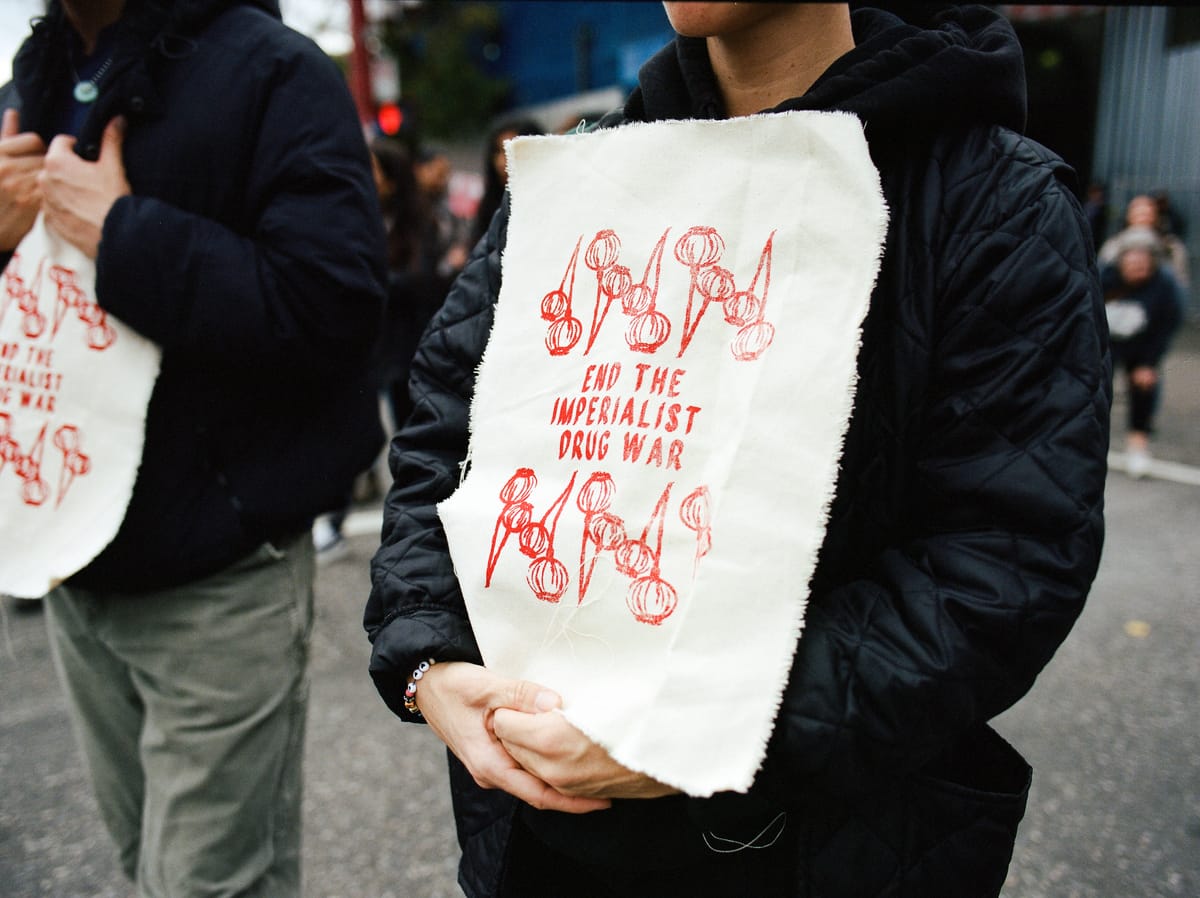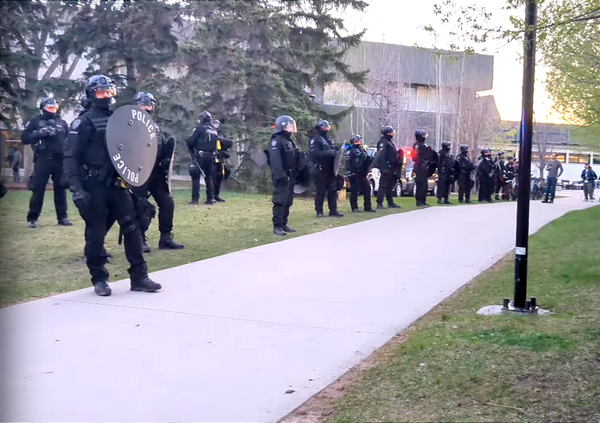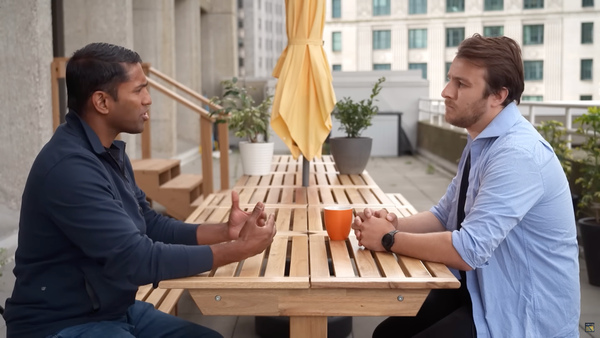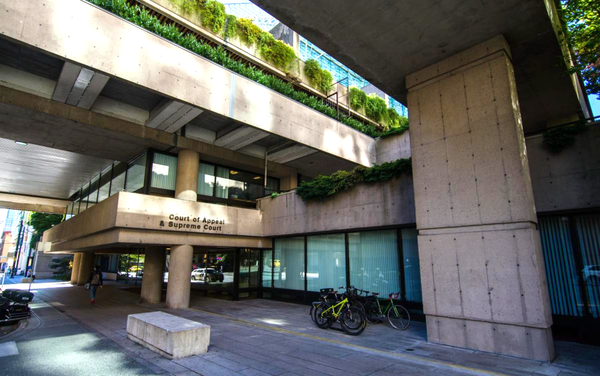Prohibition fuels drug war violence: Regulation can undercut it if done right
Intervention and regulation of the drug supply is indeed the only way out of British Columbia’s forever toxic drug emergency. But last week, the BC NDP rejected another high-level recommendation to create frameworks for non-medicalized access to opioids and other drugs.

Intervention and regulation of the drug supply, which drug users in British Columbia have demanded for decades, is indeed the only way out of the province's forever toxic drug emergency.
But last week, the BC NDP rejected yet another high-level recommendation to scale up non-prescriber (or medicalized) access to opioids and other drugs. This time the call came from the Provincial Health Officer and contributors.
Some researchers, including in a recent The Conversation article, have framed prohibitionist policies as “failures." However, this is an obscuring of history that conceals that there are always beneficiaries of prohibition, regardless of harm to the public. A famous example stems from the 1920s prohibition of alcohol, when the Klu Klux Klan profiteered off bootlegging alcohol from California to Alabama.
The overarching rationale for alcohol prohibition was never to “eliminat[e] the supply and demand of alcohol,” as the authors of The Conversation piece claim. The temperance movement has well-documented roots in attempting to impose forms of racial, cultural, moral and religious purity to reinforce settler colonial power and racist respectability. Prohibition was never just about alcohol. Prohibitionist policies have been used as tools of imperial dispossession much of the world over, and drug prohibition is used in that way now.
In B.C., there are wide-ranging groups who benefit from the prohibition of drugs, even while the policy framework continues to drive mass death and a prolonged provincial public health emergency.
For example, privatized drug “treatment” facilities, which provide the public with no evidence of their effectiveness, including sites that harbour alleged abusers and those that have stacked up workplace violations, receive public money earmarked for the toxic drug crisis response, even though their programming has no impact on the supply. Meanwhile, budgets of local, systemically racist police departments soar, even under so-called “decriminalization." And international companies, such as Indivior pharmaceuticals, make a killing off the crisis, even as they settle massive lawsuits to absolve the company from alleged violence and false advertising. (Local manufacturing of regulated opioids cannot come soon enough.) Researchers and research institutions also benefit from a constant cycle of public and private funding to study the crisis, while the obvious solutions are neglected.
From production to procurement to retail to consumption to ‘treatment,’ the deregulation of the drug market fuels unregulated violence. Regulation of the drug supply without consideration of these realities, which are rooted primarily in the interlocking social relations of racial capitalism and settler colonialism, would leave many people and communities out – just as cannabis legalization and B.C.’s decriminalization framework have.
Acknowledging these truths permits us the important step of learning from the past, as well as identifying the systems, institutions and individuals who stand behind prohibition and the reasons why. It allows us to build the foundation for regulation models that benefit the public, not solely the beneficiaries of our current frameworks.
Scholar-practitioner Zoë Dodd has aptly problematized the framing of the toxic drug crisis as a series of policy failures, instead asserting that “every overdose is a policy feature.” This reminds us that history never has a single gaze, and that the solutions to the crisis are purposefully ignored – they are not secret or unknown.
The crisis is not so much a failure by decision-makers, as it is a sanctioned massacre.
Prior to last week, the BC NDP explicitly made the choice to very quickly deny the same recommendation from their own expert Death Review Panel in 2023. The Death Review Panel also urged the creation of non-medicalized access to regulated drugs, in order to urgently reduce how many people die each day. This was weeks after the same BC NDP government reportedly requested that the local public health body defund the Drug User Liberation Front (DULF). Soon after, the DULF compassion club was raided by the Vancouver Police.
After the raids, DULF published their findings in the International Journal of Drug Policy. The results show that their shuttered compassion club has been the most effective single intervention into the crisis to date. Regulating the drug supply is indeed the way out.
But supply regulation is not a new public health intervention or idea. It has long been applied to contaminated alcohol, children’s pain medication, hygiene products, vegetables, and a host of other items and substances.
When it comes to contaminated opioids and other drugs, supply inaction is a question of morality and power. It is about who is valued versus who is seen as disposable in our society.
In B.C., like many places, prohibition and the drug war have never been rooted in scientific evidence or public health metrics. And there is no reason to believe this has changed. In many cases, racial capitalism and settler colonialism remain embedded in B.C. drug laws.
A lesson from cannabis legalization
In 2004, Toronto Police Chief turned federal cabinet minister, Julian Fantino, compared the potential legalization of cannabis to legalizing murder, and later reiterated his “complete opposition” to such a policy. Once cannabis was legalized, however, Fantino was one of the earliest investors in the private cannabis market.
Rather than centre the people most harmed by the criminalization of cannabis, primarily Black people and Indigenous Peoples within the Canadian context, the federal government’s legalization model consisted of no meaningful social equity initiatives, which created a pathway for the same groups benefiting from criminalization to then benefit from legalization, as they already had a leg up in terms of resources.
While an imperfect model that was prematurely halted, New York’s cannabis legalization model came with a social equity plan that was fought for to support people most harmed by racist drug war policies. This model could be improved upon in other jurisdictions, rather than bogged down by bureaucratic delays. NY’s cannabis plan came with an objective of awarding 50 per cent of retail licenses to minority and women-owned business enterprises, distressed farmers and disabled veterans. NY also created a pathway to expunging cannabis convictions, whereas Canada stopped short with slow paced suspensions, another policy decision against rectifying racist prohibitionist policy.
Law enforcement cooptation of decrim
In 2021, the Vancouver Area Network of Drug Users warned against the decriminalization model being developed by city researchers, as well as the police.
VANDU noted that drug user input had been heard but ignored in development of the model, which they argued would subject people to “greater exposure to police profiling and brutalization,” because the model ignored the realities of the drug market by placing arbitrary limits on the amounts of decriminalized possession. VANDU stated that the model would “go down in history as a deadly failure of public policy,” and told those leading the city efforts, “our blood will be on your hands.”
Since 2021, the Union of BC Indian Chiefs, BC Association of Aboriginal Friendship Centres, BC First Nations Justice Council, Métis Nation of British Columbia, among many other groups, have all joined the dissent against the threshold amounts and model.
VANDU’s prediction came to fruition as law enforcement further co-opted the threshold-based decriminalization model at the provincial level to "mission creep" their scope into health and social service roles (and budgets). Police eventually lobbied the province for even more power under Bill 34, the “Restricting Public Consumption of Illegal Substances Act.” Bill 34 allows for police to target people they suspect of recent drug use with arrests without warrants, displacement and fines. When Bill 34 was stopped under a temporary injunction from the BC Supreme Court in December 2023, Premier David Eby employed the decriminalization of possession policy framework to further criminalize drug use (this now also faces a legal challenge). Overdose deaths did not decrease, while police budgets increased exponentially across BC, particularly in Vancouver.
Drug laws rooted in racial capitalism are fatal
Racial capitalism is the acknowledgement that economic and racist power are not separate, but intertwined systems with shared histories. Prohibition is a racist set of policies and laws that targets certain groups of people, and then negatively impacts all people who are not the beneficiaries of status quo drug-related policies. For example, while (now former) sections of the Indian Act focused on criminalizing Indigenous Peoples for substance use and possession, settlers who shared or bought and sold drugs with Indigenous Peoples were also criminalized, albeit to a lesser extent. And while contemporary forms of drug user criminalization primarily targets Black, Indigenous and South Asian communities in BC, this criminalization ultimately negatively impacts the greater public.
Understanding the interconnected systems of power that uphold prohibition are key to its dismantling if we seek a post-prohibition future that allows for everyone to have flourishing lives; otherwise, we risk being subjected to bare life, all while the same people who benefit from the current system also benefit from drug regulation. Neglecting these systemic truths risks a return to a time when specific classes and demographics could access legally regulated substances, while others could not.
The Provincial Health Officer’s report once again validated DULF’s compassion club model – a nonprofit model that includes retailing substances at cost, while services are operated by members of the community.
Drug prohibition is fueling the crisis – but prohibition is not simply a natural phenomena. It is upheld by our decisions, governance and policy structures. There are people and institutions behind the structures that fuel the crisis.
Drug regulation is the way out of the toxic drug crisis, but ending carceral consequence for substance use, sharing and possession; building infrastructure for those harmed by the drug war to have leadership roles in the market once we reach the other side; and ensuring growing, production and procurement methods are consistent with the workplace regulations that labour movements have fought for, are all key objectives for a safer drug supply chain and a future worth fighting for.





